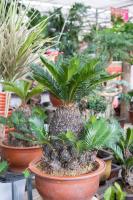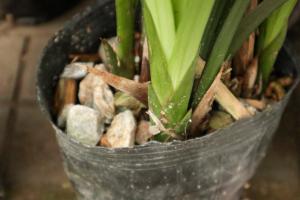Can Bleach Disinfect a Plant Pot?
Plant pots are essential items for gardening enthusiasts. They allow plants to be transported and grown indoors or on balconies. However, over time, plant pots can become a breeding ground for bacteria, mold, and mildew, which can harm plants and even cause health issues for humans. Disinfecting a plant pot is crucial to maintain optimum plant health. One of the most popular and effective ways to disinfect a plant pot is by using bleach. But can bleach indeed disinfect a plant pot? Let's find out.
What Is Bleach?
Bleach is a chemical that is commonly used in households to clean, deodorize, and whiten surfaces. It is a strong oxidizing agent that can break down stains, dirt, and organic matter. Bleach typically contains sodium hypochlorite, which is responsible for its disinfectant properties. Sodium hypochlorite can eliminate pathogenic bacteria, viruses, and fungi from surfaces, making it an effective disinfectant.
How to Disinfect a Plant Pot with Bleach?
Disinfecting a plant pot with bleach is easy and straightforward. Here's how:
Start by cleaning the plant pot with soap and water to remove any obvious dirt or debris.
Prepare a solution of bleach by mixing one part bleach with nine parts water.
Put on gloves to protect your hands from the bleach solution.
Using a clean cloth or sponge, apply the bleach solution to the plant pot, making sure to cover all surfaces, including the inside and outside of the pot.
Allow the bleach solution to sit on the plant pot for at least five minutes.
Rinse the plant pot thoroughly with water to remove any leftover bleach solution.
Let the plant pot air dry before use.
Is Bleach Safe for Plants?
Bleach can be harmful to plants if used incorrectly. When using bleach to disinfect a plant pot, it is essential to dilute the solution properly, as bleach can be too harsh and damage plants if used at full strength. The recommended ratio for bleach and water mixture is one-part bleach to nine parts water. Additionally, after cleaning the plant pot with bleach, it's crucial to rinse it thoroughly with water to remove any bleach residue. Allow the plant pot to air dry completely before use. If you are still concerned, try using a natural disinfectant made from vinegar or hydrogen peroxide instead of bleach.
Conclusion
Bleach is an effective disinfectant to clean and sanitize plant pots, but it must be used correctly. Diluting it with water and rinsing the pot thoroughly is essential to protect the plant from being damaged. The use of bleach can save a plant from being infected with bacteria, mold, and mildew that can cause health issues for humans and harm the plant growth. It's always a good practice to keep the plant pot clean and disinfected to maintain optimum plant health and growth.

 how many times do yo...
how many times do yo... how many planted tre...
how many planted tre... how many pine trees ...
how many pine trees ... how many pecan trees...
how many pecan trees... how many plants comp...
how many plants comp... how many plants can ...
how many plants can ... how many plants and ...
how many plants and ... how many pepper plan...
how many pepper plan...
































